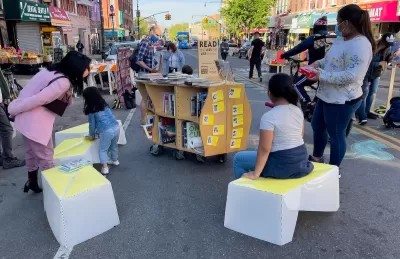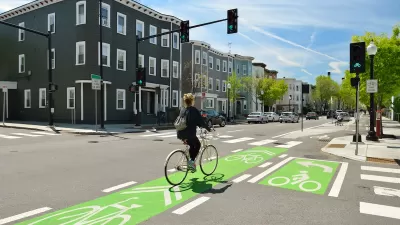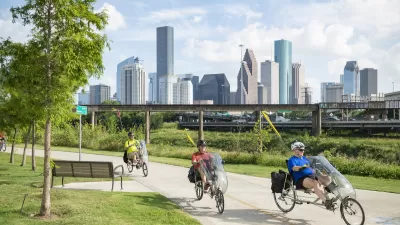The NYC DOT program will build on pandemic-era initiatives to promote safe and comfortable streets that enhance community and expand uses beyond just moving cars.

In an article in Next City, Maylin Tu describes the New York City Department of Transportation’s new Office of Livable Streets, which calls itself the first of its kind in the nation. Sean Quinn, associate deputy commissioner for the new office, told Next City that “the rebrand was born from the pandemic and the ways that New Yorkers started using streets as places to connect and build community — for example, through the Open Streets program — rather than as places to drive or park a car.”
The initiative seeks to prioritize non-auto modes and redesign city streets to accommodate a variety of users safely. “The new office rebrands what was previously known as the Office of Street Improvements. It consists of different sub-units, including the Public Realm, Bike, Policy and Innovation, Street Furniture, Street Improvement Projects Central and Administration units.”
The office says it will focus on improving safety for micromobility — particularly as e-bikes and cargo bikes grow in popularity among delivery companies — and use a range of flexible interventions to redesign each block as appropriate.
FULL STORY: NYC’s New Office of Livable Streets Aims To Make Streets Safer, Greener and More Habitable

Trump Administration Could Effectively End Housing Voucher Program
Federal officials are eyeing major cuts to the Section 8 program that helps millions of low-income households pay rent.

Planetizen Federal Action Tracker
A weekly monitor of how Trump’s orders and actions are impacting planners and planning in America.

Ken Jennings Launches Transit Web Series
The Jeopardy champ wants you to ride public transit.

Crime Continues to Drop on Philly, San Francisco Transit Systems
SEPTA and BART both saw significant declines in violent crime in the first quarter of 2025.

How South LA Green Spaces Power Community Health and Hope
Green spaces like South L.A. Wetlands Park are helping South Los Angeles residents promote healthy lifestyles, build community, and advocate for improvements that reflect local needs in historically underserved neighborhoods.

Sacramento Plans ‘Quick-Build’ Road Safety Projects
The city wants to accelerate small-scale safety improvements that use low-cost equipment to make an impact at dangerous intersections.
Urban Design for Planners 1: Software Tools
This six-course series explores essential urban design concepts using open source software and equips planners with the tools they need to participate fully in the urban design process.
Planning for Universal Design
Learn the tools for implementing Universal Design in planning regulations.
Heyer Gruel & Associates PA
Ada County Highway District
Institute for Housing and Urban Development Studies (IHS)
City of Grandview
Harvard GSD Executive Education
Toledo-Lucas County Plan Commissions
Salt Lake City
NYU Wagner Graduate School of Public Service





























